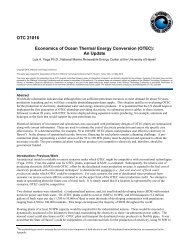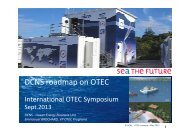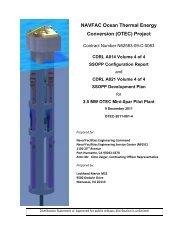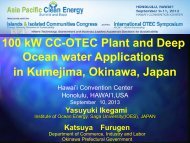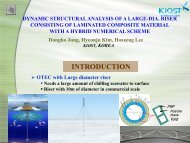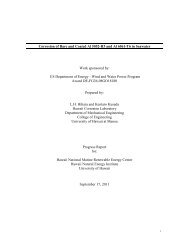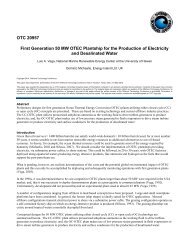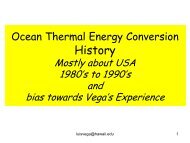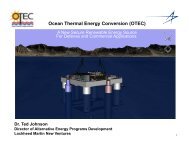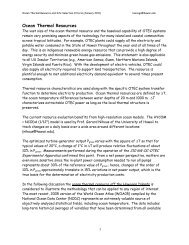MS Thesis R. Hager - Hawaii National Marine Renewable Energy ...
MS Thesis R. Hager - Hawaii National Marine Renewable Energy ...
MS Thesis R. Hager - Hawaii National Marine Renewable Energy ...
- No tags were found...
You also want an ePaper? Increase the reach of your titles
YUMPU automatically turns print PDFs into web optimized ePapers that Google loves.
narrow creating a limited number of optimal conditions. Phase control methods, such aslatching, may be used to mediate these problems.1.3.4 VariabilityThe wave power is variable on multiple time scales: wave to wave, hour to hour, month tomonth, etc. (Falcão, 2010). However, power supply needs to be smooth and constant, thus,requiring a storage device or an array of bodies (Drew, 2009). The average power level mayalso be overestimated with seasonal variability and extreme conditions making it difficult todesign for a particular wave climate. Wave direction is also variable, thus the WEC deviceseither need to align in a position to most often capture the wave’s power or need to besymmetrical (Drew, 2009).1.4 Potential Location for Wave <strong>Energy</strong>Drew (2009) considers locations with average power levels of 30 – 70kW/m suitable forwave energy harvesting; typically these occur at latitudes of 40 ◦ – 60 ○ seen in Figure 1.7.Suitable locations include Western Europe, the Pacific Northwest of America, SouthAmerica, South Africa, and Australia with a higher resource in the southern hemisphere(Cruz, 2008). Tropical waters typically rate poorly with average power levels of 15 –20kW/m. Factors to consider in conjunction with wave power levels are population densityand seasonal variation. Although the southern hemisphere has the best wave resources, thereis a higher energy demand in the northern hemisphere.16



